- Главная
- Разное
- Бизнес и предпринимательство
- Образование
- Развлечения
- Государство
- Спорт
- Графика
- Культурология
- Еда и кулинария
- Лингвистика
- Религиоведение
- Черчение
- Физкультура
- ИЗО
- Психология
- Социология
- Английский язык
- Астрономия
- Алгебра
- Биология
- География
- Геометрия
- Детские презентации
- Информатика
- История
- Литература
- Маркетинг
- Математика
- Медицина
- Менеджмент
- Музыка
- МХК
- Немецкий язык
- ОБЖ
- Обществознание
- Окружающий мир
- Педагогика
- Русский язык
- Технология
- Физика
- Философия
- Химия
- Шаблоны, картинки для презентаций
- Экология
- Экономика
- Юриспруденция
Что такое findslide.org?
FindSlide.org - это сайт презентаций, докладов, шаблонов в формате PowerPoint.
Обратная связь
Email: Нажмите что бы посмотреть
Презентация на тему Great auk
Содержание
- 2. " In June of 1840, three sailors
- 3. The great auk was flightless bird of
- 4. DescriptionStanding about 75 to 85 centimeters tall
- 5. The back was glossy black, and the
- 6. The beak was large at 11 centimeters
- 7. Habitat The great auk was found in
- 8. For their nesting colonies the great auks
- 9. FoodTheir main food was fish, usually 12
- 10. Relationship with humans The great auk was
- 11. ExtinctionThe Little Ice Age may have reduced
- 12. The last colony of great auks lived
- 13. Скачать презентацию
- 14. Похожие презентации
" In June of 1840, three sailors hailing from the Scottish island of St.Klida landed on the craggy ledges of a nearby seastack, known as Stac-an-Armin. As they climbed up the rock, they spotted a peculiar

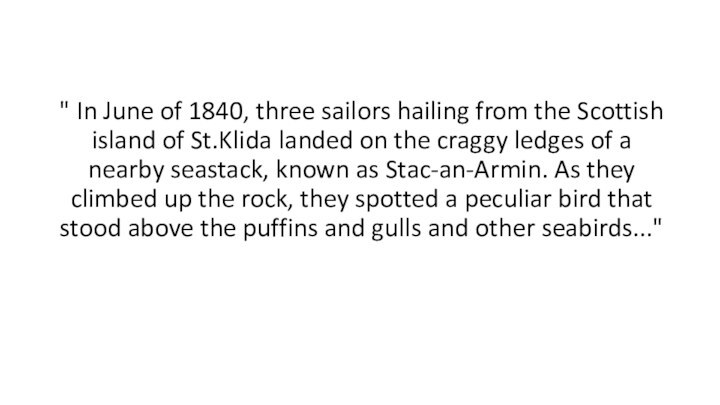
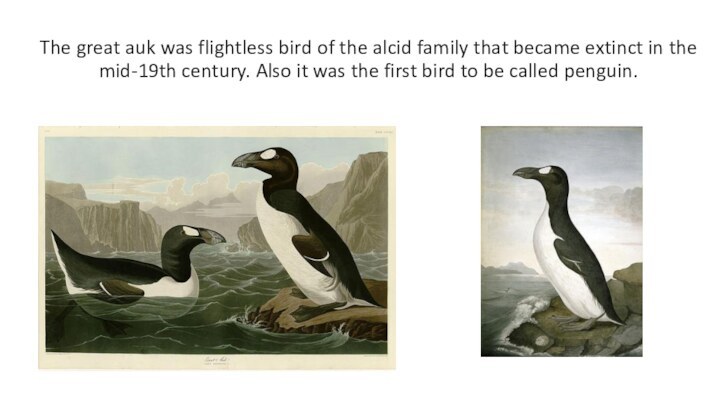


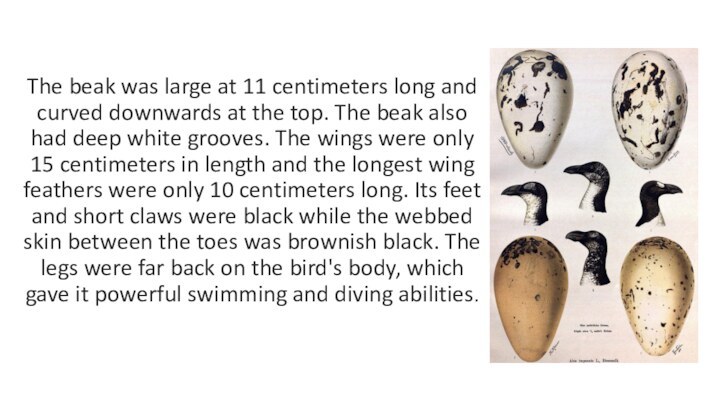
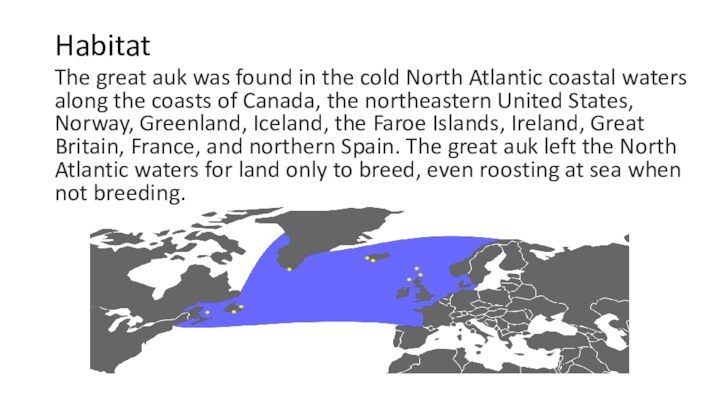
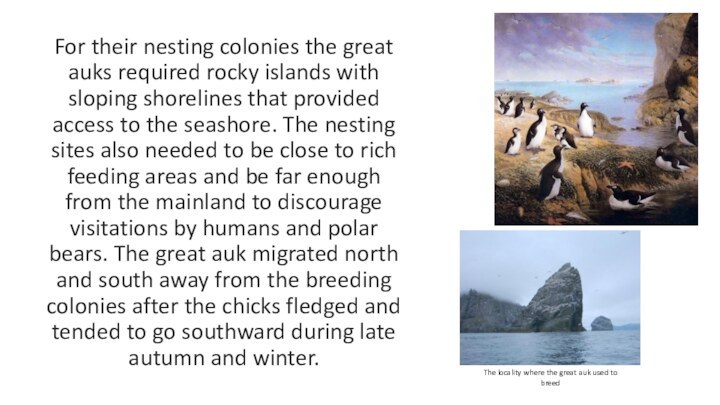
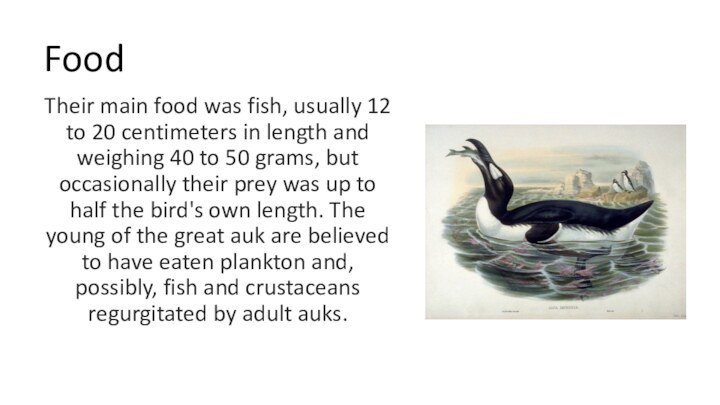

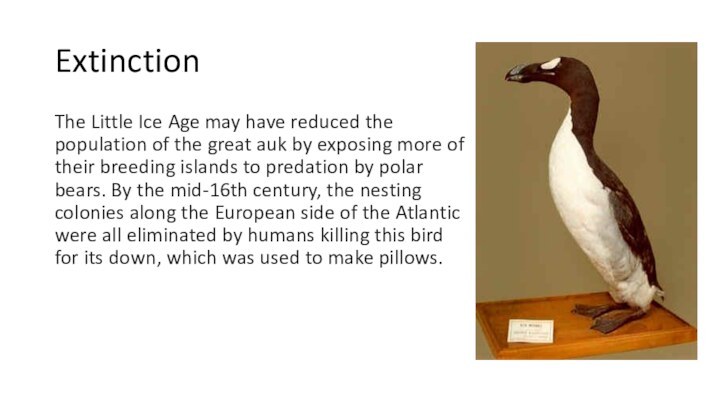

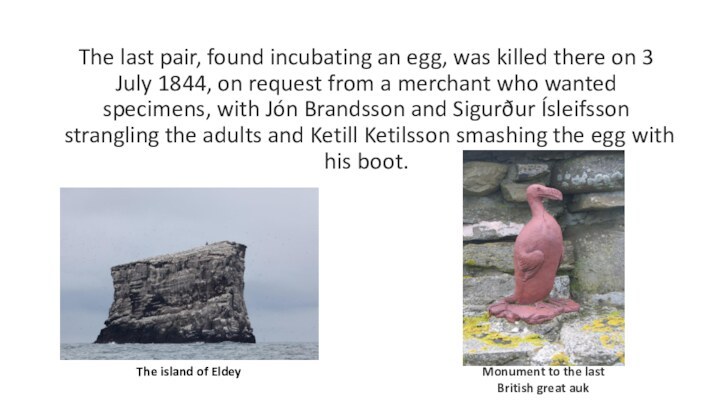
Слайд 3 The great auk was flightless bird of the
alcid family that became extinct in the mid-19th century.
Also it was the first bird to be called penguin.
Слайд 4
Description
Standing about 75 to 85 centimeters tall and
weighing around 5 kilograms as adult birds, the flightless
great auk was the second largest member of both its family and the order Charadriiformes. The auks that lived further north averaged larger in size than the more southerly members of the species.Слайд 5 The back was glossy black, and the stomach
was white. The neck and legs were short, and
the head and wings small. The auk appeared chubby due to a thick layer of fat necessary for warmth. During summer, the great auk developed a wide white eye patch over the eye. During winter the auk molted and lost this eye patch, which was replaced with a wide white band and a gray line of feathers which stretched from the eye to the ear.Слайд 6 The beak was large at 11 centimeters long
and curved downwards at the top. The beak also
had deep white grooves. The wings were only 15 centimeters in length and the longest wing feathers were only 10 centimeters long. Its feet and short claws were black while the webbed skin between the toes was brownish black. The legs were far back on the bird's body, which gave it powerful swimming and diving abilities.
Слайд 7
Habitat
The great auk was found in the cold
North Atlantic coastal waters along the coasts of Canada,
the northeastern United States, Norway, Greenland, Iceland, the Faroe Islands, Ireland, Great Britain, France, and northern Spain. The great auk left the North Atlantic waters for land only to breed, even roosting at sea when not breeding.Слайд 8 For their nesting colonies the great auks required
rocky islands with sloping shorelines that provided access to
the seashore. The nesting sites also needed to be close to rich feeding areas and be far enough from the mainland to discourage visitations by humans and polar bears. The great auk migrated north and south away from the breeding colonies after the chicks fledged and tended to go southward during late autumn and winter.The locality where the great auk used to breed





























